Abstract
The light-gradient photovoltage from photosynthetic organisms and organelles is thought to arise from the primary charge separation in the reaction centers. The current explanation of the effect is the stronger excitation of the membrane side of a vesicle facing the light source than the one on the opposite side. Together with the known orientation of reaction centers, this explanation predicts unequivocally the polarity of the photovoltage. However, a polarity opposite to the one expected has often been reported. A dependence of the polarity on the wavelength has been published but no explanation was given (Gräber, P., and H.-W. Trissl. 1981. FEBS Lett. 123:95-99). Here we report on a theoretical treatment of light propagation and interference in pigmented and nonpigmented multilayers. A model calculation is carried out for a pair of membranes, demonstrating the wavelength-dependent light distribution as well as the relative photovoltage and its polarity. When the membranes contain no chromophores or when the absorption coefficient is low, the predicted polarity to that expected from a simple macroscopic absorption behavior. The model is tested by comparing new photovoltage data obtained at 532 nm as well as in the blue and red absorption bands of chlorophyll in chloroplasts. It is concluded that outside the main absorption bands the amplitude and polarity of the photovoltage is determined by the ratio of the refractive indices of the membrane and the medium.
Full text
PDF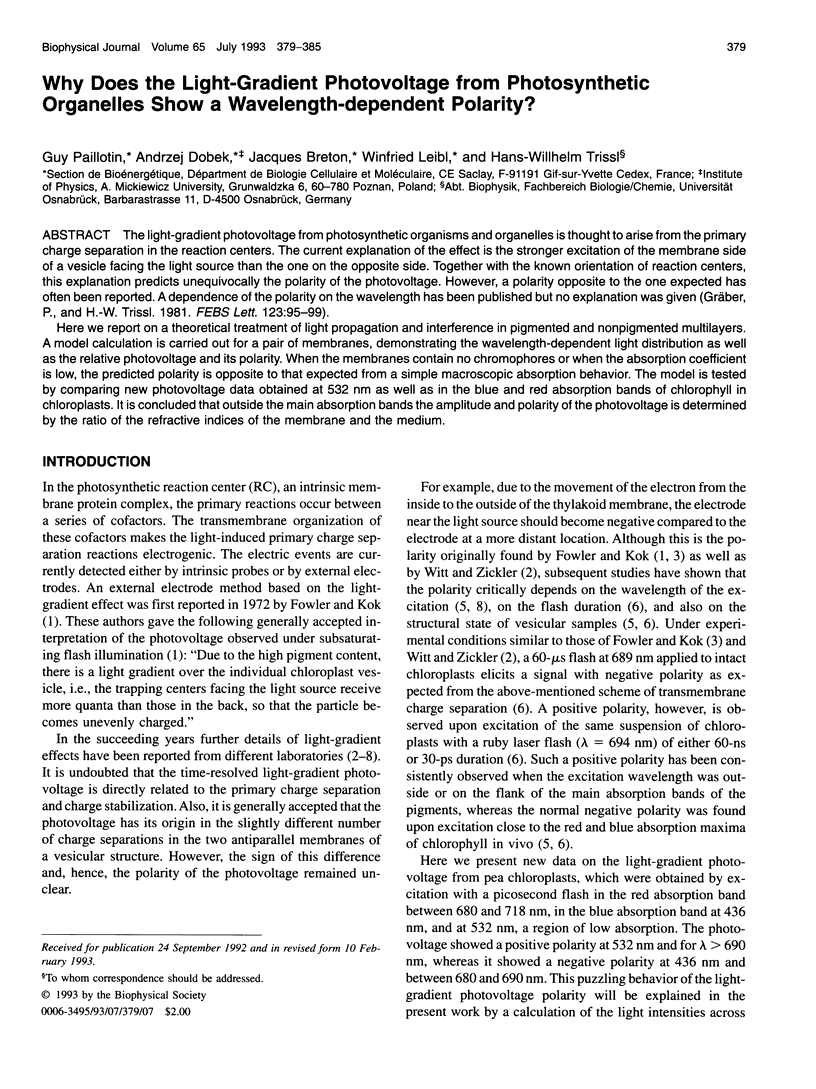
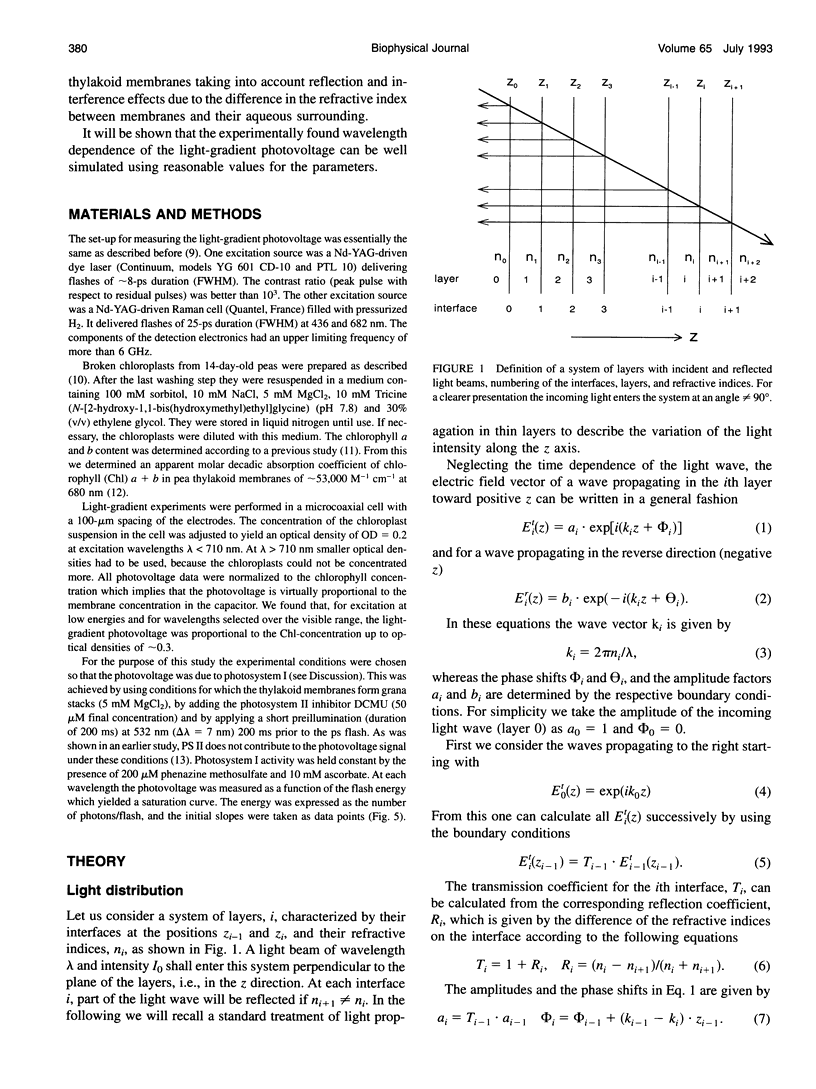

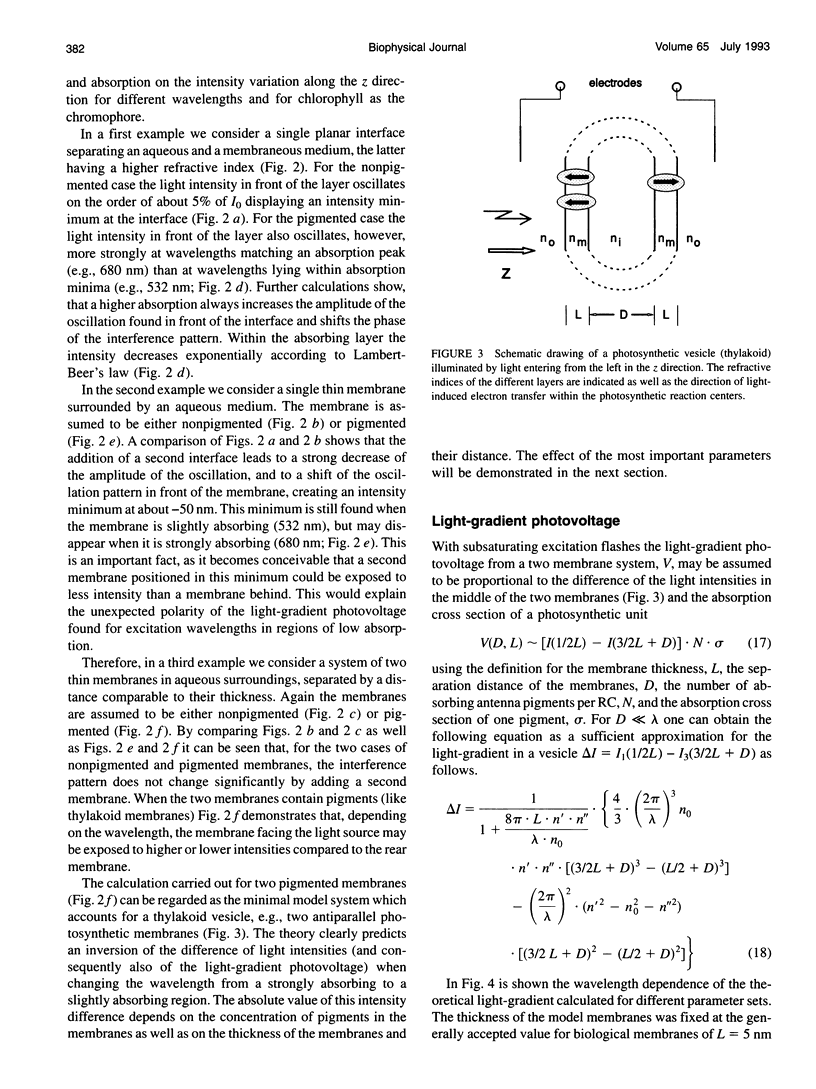
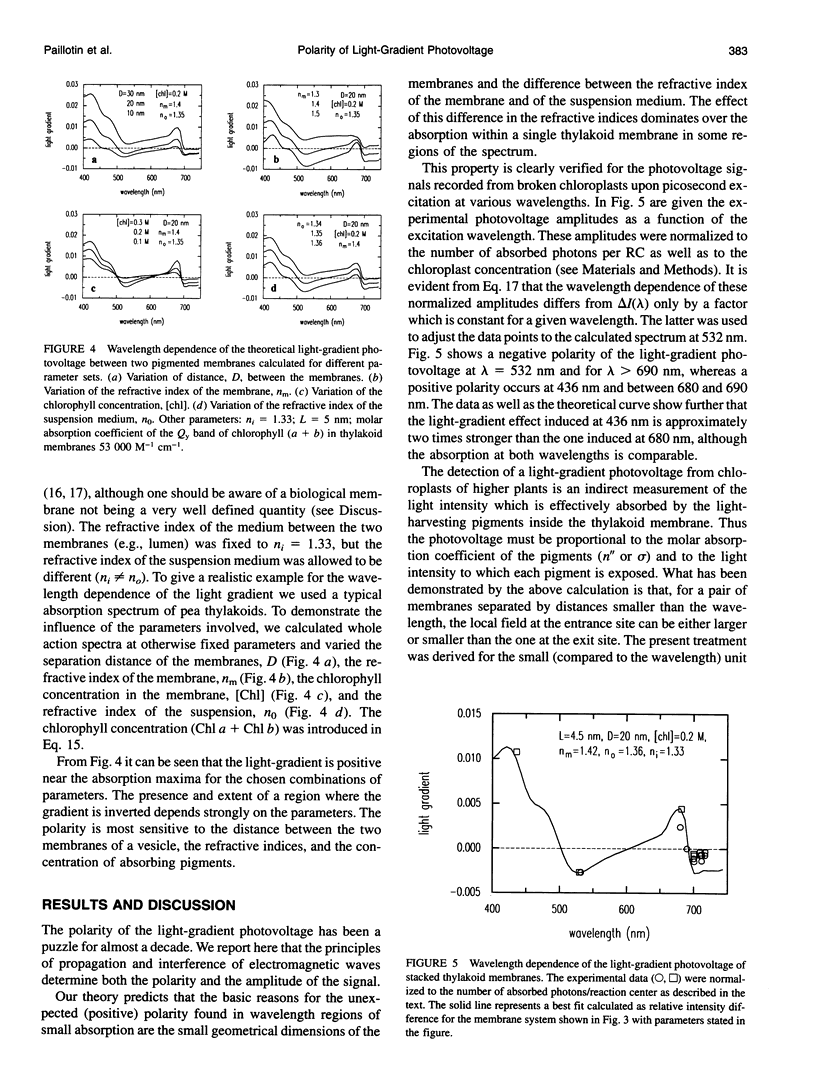
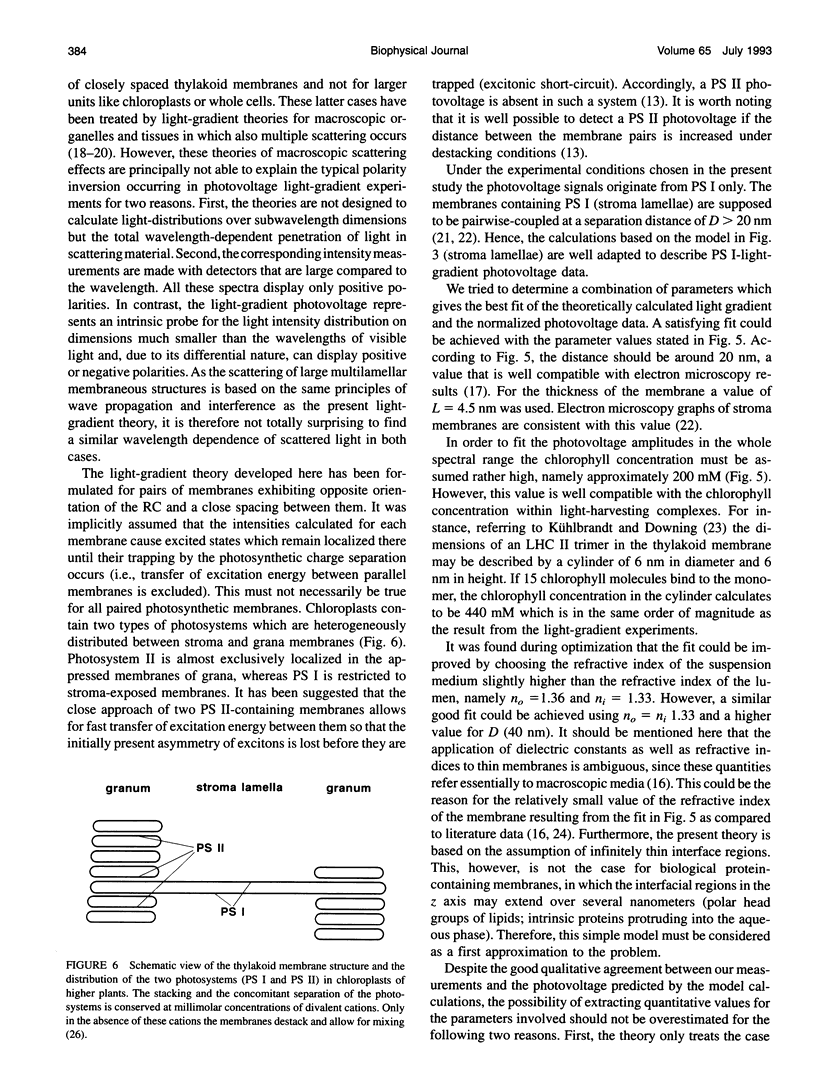
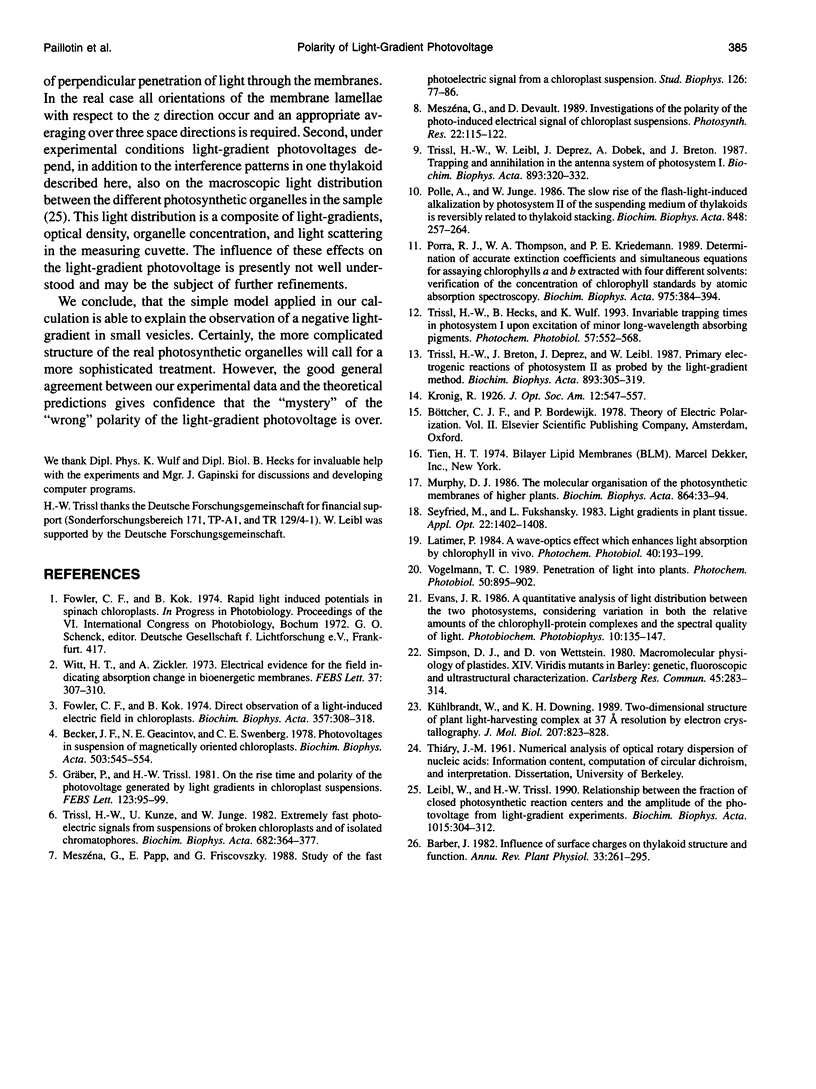
Selected References
These references are in PubMed. This may not be the complete list of references from this article.
- Becker J. F., Geacintov N. E., Swenberg C. E. Photovoltages in suspensions of magnetically oriented chloroplasts. Biochim Biophys Acta. 1978 Sep 7;503(3):545–554. doi: 10.1016/0005-2728(78)90152-4. [DOI] [PubMed] [Google Scholar]
- Fowler C. F., Kok B. Direct observation of a light-induced electric field in chloroplasts. Biochim Biophys Acta. 1974 Aug 23;357(2):308–318. doi: 10.1016/0005-2728(74)90069-3. [DOI] [PubMed] [Google Scholar]
- Kühlbrandt W., Downing K. H. Two-dimensional structure of plant light-harvesting complex at 3.7 A [corrected] resolution by electron crystallography. J Mol Biol. 1989 Jun 20;207(4):823–828. doi: 10.1016/0022-2836(89)90247-7. [DOI] [PubMed] [Google Scholar]
- Witt H. T., Zickler A. Electrical evidence for the field indicating absorption change in bioenergetic membranes. FEBS Lett. 1973 Dec 1;37(2):307–310. doi: 10.1016/0014-5793(73)80484-3. [DOI] [PubMed] [Google Scholar]


